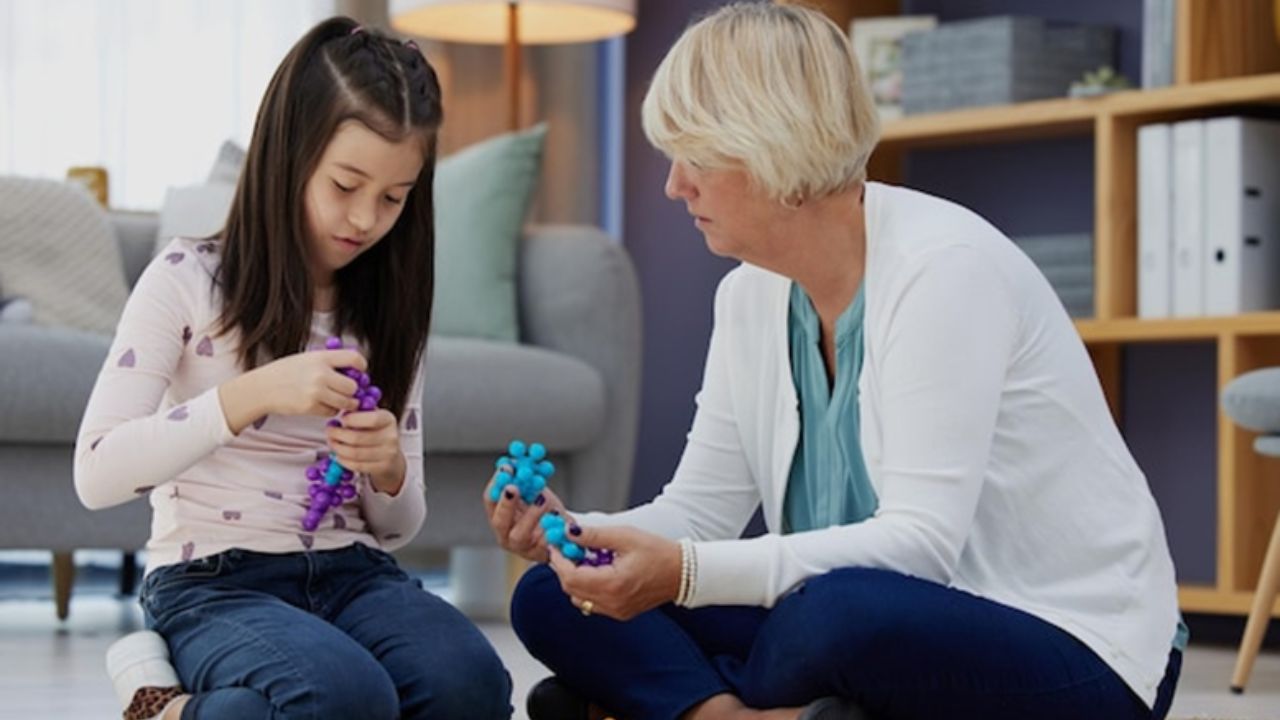Autism is a complex neurodevelopmental condition that typically requires professional intervention and support. While there is no known cure for autism, various therapies and strategies can help manage symptoms and improve quality of life. Here are some approaches that can be beneficial when managing autism at home:
1. Early Intervention Programs: Starting intervention as early as possible can significantly improve outcomes. Look for programs that provide speech therapy, occupational therapy, and behavioral therapy tailored to your child’s needs.
2. Create a Structured Environment: Individuals with autism often benefit from a structured and predictable environment. Establish routines for daily activities like meals, bedtime, and playtime.
3. Visual Supports: Visual aids such as schedules, charts, and visual timers can help individuals with autism understand expectations and transitions better.
4. Sensory Integration Techniques: Many individuals with autism are sensitive to sensory stimuli. Create a sensory-friendly environment by providing comfortable clothing, using soft lighting, and minimizing loud noises.
5. Communication Strategies: Use clear and simple language when communicating with your child. Consider using alternative communication methods like visual aids, picture cards, or augmentative and alternative communication (AAC) devices.
6. Encourage Social Interaction: Engage your child in social activities that match their interests and abilities. Encourage peer interactions through playdates or social skills groups.
7. Promote Healthy Lifestyle Habits: Ensure your child gets regular exercise, eats a balanced diet, and gets enough sleep. Physical activity can help reduce stress and improve overall well-being.
8. Mindfulness and Relaxation Techniques: Teach relaxation techniques such as deep breathing, yoga, or meditation to help your child manage stress and anxiety.
9. Educate Yourself: Learn more about autism spectrum disorder (ASD) and stay informed about the latest research, treatments, and therapies. Connect with support groups or online communities for guidance and support.
10. Work with Professionals: Consult with healthcare providers, therapists, educators, and behavioral specialists who can provide personalized guidance and interventions for your child.
It’s crucial to approach autism with patience, understanding, and acceptance. While there’s no cure, with the right support and interventions, individuals with autism can lead fulfilling and meaningful lives.
Early Intervention Programs: How to Manage Autism at Home?.
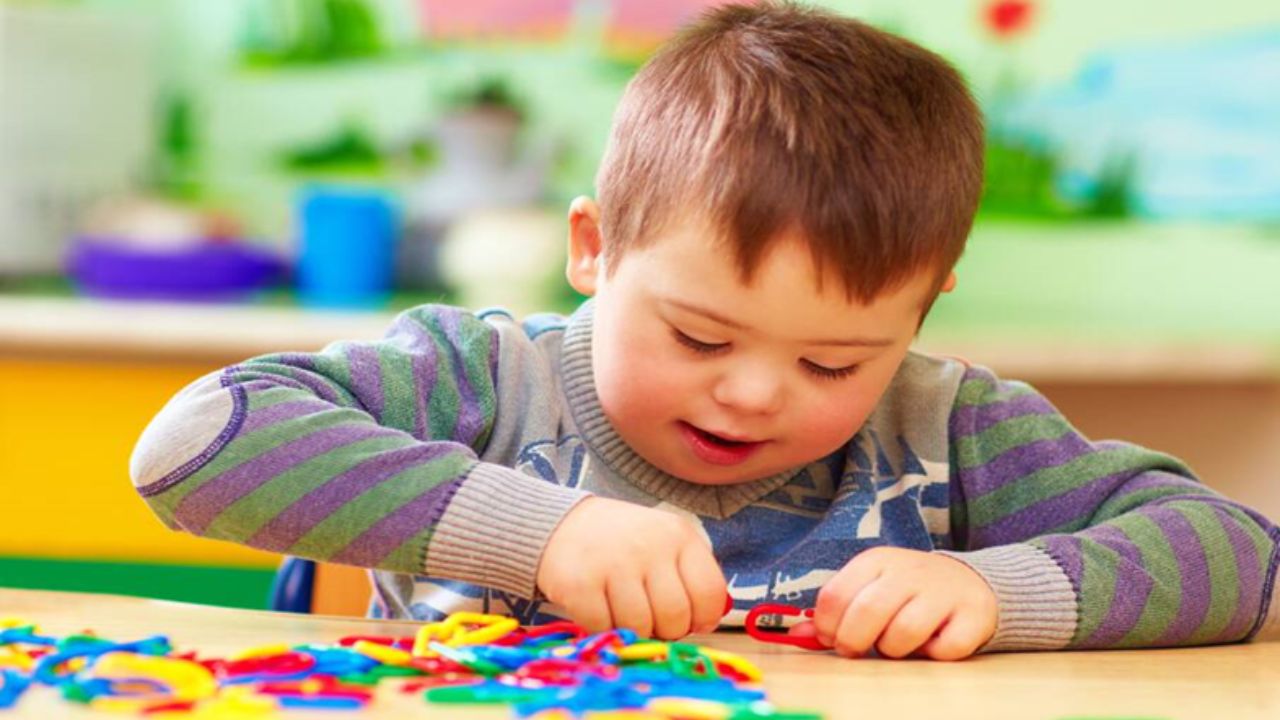
Early intervention programs for autism are typically provided by professionals such as speech therapists, occupational therapists, and behavioral therapists. However, there are several strategies and activities that parents can implement at home to support their child’s development and complement formal interventions. Here are some early intervention strategies that can be implemented at home:
1. Establish a Structured Routine: Create a predictable daily schedule with consistent routines for activities such as meals, playtime, learning sessions, and bedtime. Visual schedules or charts can help make the routine more accessible and understandable for the child.
2. Encourage Communication: Use clear and simple language when communicating with your child. Encourage communication through gestures, words, or alternative communication methods such as picture cards or AAC devices. Respond positively to any attempts at communication, even if they are nonverbal.
3. Provide Sensory-Friendly Environment: Many children with autism are sensitive to sensory stimuli. Create a calm and sensory-friendly environment at home by minimizing loud noises, providing comfortable clothing, using soft lighting, and offering sensory toys or tools like weighted blankets or fidget toys.
4. Engage in Play-Based Learning: Use play as a way to teach and engage with your child. Choose toys and activities that match their interests and developmental level. Incorporate pretend play, sensory play, and turn-taking games to promote social interaction and learning.
5. Focus on Social Skills: Help your child develop social skills by practicing social interactions at home. Use role-playing games, social stories, and video modeling to teach appropriate social behaviors such as sharing, taking turns, making eye contact, and understanding emotions.
6. Support Self-Help Skills: Encourage independence by teaching self-help skills such as dressing, eating, grooming, and using the toilet. Break down tasks into smaller steps, provide visual cues or prompts, and offer praise and reinforcement for their efforts.
7. Promote Fine and Gross Motor Skills: Engage in activities that promote fine motor skills (e.g., drawing, cutting, stacking blocks) and gross motor skills (e.g., jumping, climbing, kicking a ball). Physical activity is essential for overall development and can also help regulate sensory input.
8. Use Technology Wisely: Utilize educational apps, interactive games, and online resources designed for children with autism. However, monitor screen time and ensure that technology use is balanced with other activities that promote social interaction and physical activity.
9. Collaborate with Professionals: Stay in regular contact with your child’s healthcare providers, therapists, and educators. Implement their recommendations and strategies at home, and seek guidance or training on how to support your child’s development effectively.
10. Practice Patience and Positive Reinforcement: Celebrate small achievements and progress, and avoid placing too much pressure on your child. Use positive reinforcement, praise, and encouragement to motivate and support their learning and growth.
Remember that every child with autism is unique, so it’s essential to tailor interventions and activities based on their individual strengths, needs, and preferences. Consistency, patience, and a supportive environment are key factors in early intervention success at home.
Building a Foundation: Creating a Structured Environment for Child Development at Home 
Creating a structured environment at home can be highly beneficial for individuals with autism as it provides predictability, reduces anxiety, and supports daily routines. Here are steps you can take to establish a structured environment:
1. Develop a Daily Schedule: Create a visual schedule that outlines the daily activities and routines. Use pictures, symbols, or words to represent each activity (e.g., breakfast, school time, playtime, dinner, bedtime). Display the schedule in a prominent place where your child can easily see and refer to it.
2. Consistent Daily Routine: Stick to a consistent daily routine as much as possible. Set regular times for waking up, meals, schoolwork, playtime, baths, and bedtime. Consistency helps reduce uncertainty and anxiety.
3. Use Visual Supports: Visual supports such as visual schedules, charts, calendars, and timers can help your child understand transitions and what to expect throughout the day. Use color-coding or symbols to differentiate between different types of activities.
4. Prepare in Advance: Prepare for transitions and activities in advance. For example, lay out clothes the night before, set up materials for homework or activities, and plan meals ahead of time. This reduces last-minute stress and promotes a smoother transition between activities.
5. Provide Clear Instructions: Use clear and simple language when giving instructions or explaining tasks. Break down tasks into smaller steps and provide visual cues or prompts if needed. For example, use a checklist for morning routines or a step-by-step guide for completing chores.
6. Create Organized Spaces: Organize your home environment to support structured routines. Use labels, bins, and storage containers to keep belongings organized and easily accessible. Designate specific areas for different activities such as a study area, play area, and quiet corner for relaxation.
7. Establish Rules and Expectations: Clearly communicate rules, expectations, and consequences in a positive and consistent manner. Use visual reminders or social stories to reinforce important rules and social behaviors.
8. Limit Distractions: Minimize distractions in the environment that can disrupt routines or cause sensory overload. Create a quiet and calm space for focused activities such as homework or reading. Use noise-cancelling headphones or curtains to reduce noise and visual distractions if needed.
9. Encourage Independence: Support your child’s independence by teaching self-help skills and encouraging them to take responsibility for certain tasks. Provide opportunities for them to make choices within structured limits (e.g., choosing between two snack options or selecting a preferred activity).
10. Maintain Flexibility: While structure is essential, it’s also important to be flexible and adaptable when necessary. Allow for some variation in routines and be open to making adjustments based on your child’s needs and preferences.
By implementing these strategies, you can create a structured and supportive home environment that promotes predictability, reduces stress, and enhances your child’s ability to thrive and engage in daily activities.
Create A Visual Supports Programs For Autistic Child At Home.
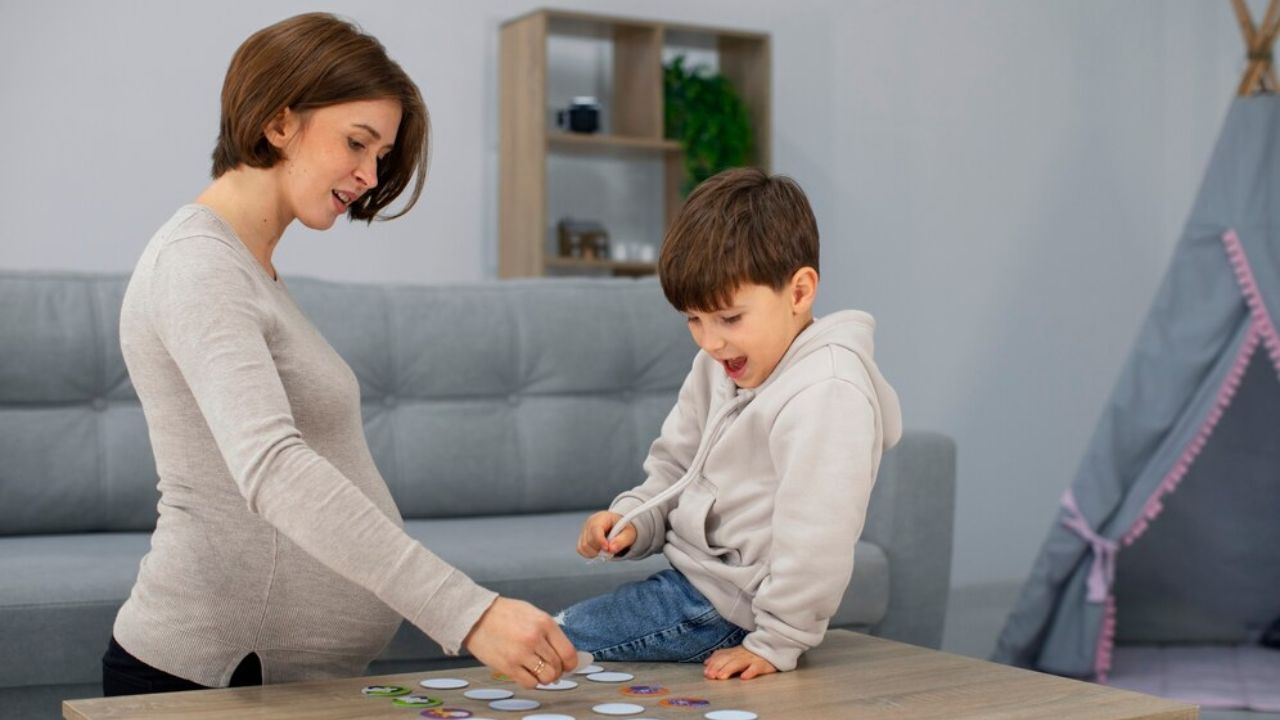
Implementing visual supports at home can greatly benefit individuals with autism by providing structure, promoting understanding, and reducing anxiety. Here’s how you can create and use visual supports effectively:
1. Visual Schedules: Develop a visual schedule for daily activities using pictures, symbols, or words. Include routine activities such as waking up, meals, schoolwork, playtime, chores, and bedtime. Use a large wall chart, a whiteboard, or a digital app to display the schedule where it’s easily visible.
2. Task Lists and Checklists: Create task lists or checklists for specific activities or chores. Break down tasks into smaller steps and use visual cues to guide your child through each step. For example, a checklist for getting ready in the morning can include brushing teeth, getting dressed, and packing a school bag.
3. First-Then Boards: Use a “first-then” board to visually represent tasks or activities in sequence. For instance, show a picture of completing homework (first) followed by a preferred activity like playing with toys (then). This helps your child understand what needs to be done before they can engage in a preferred activity.
4. Visual Timers: Use visual timers to help your child understand the concept of time and manage transitions. Set timers for specific activities or tasks and use visual cues such as a countdown clock or color changes to indicate time remaining.
5. Choice Boards: Create choice boards with pictures or symbols representing different options (e.g., snack choices, activity choices, reward options). Allow your child to make choices within structured limits, which promotes independence and reduces anxiety.
6. Social Stories: Develop social stories using pictures and simple text to explain social situations, rules, expectations, and behavioral concepts. Use social stories to prepare your child for new experiences, teach social skills, and address specific challenges or routines.
7. Visual Supports for Emotions: Create visual supports to help your child identify and express emotions. Use emotion cards or a feelings chart with pictures depicting different emotions. Encourage your child to point to or use the appropriate emotion card to express how they feel.
8. Communication Boards or AAC Devices: If your child has communication challenges, consider using communication boards or augmentative and alternative communication (AAC) devices. These tools use symbols, pictures, or words to support communication and language development.
9. Visual Cues for Transitions: Use visual cues such as countdowns, transition warnings, or “finished” cards to prepare your child for transitions between activities or changes in routine. This helps reduce anxiety and improves cooperation during transitions.
10. Consistency and Reinforcement: Be consistent in using visual supports across different settings and activities. Provide positive reinforcement and praise when your child successfully uses visual supports or completes tasks independently.
Additionally, there are various apps and online resources available that offer customizable visual support tools, including visual schedules, social stories, choice boards, and communication aids. Explore these options to find what works best for your child’s needs and preferences.
Overall, visual supports can be powerful tools for promoting understanding, independence, and communication skills in individuals with autism at home. Tailor visual supports to suit your child’s unique strengths and challenges, and collaborate with professionals for guidance and support as needed.
Implement Sensory Integration Techniques for Autism at Home.
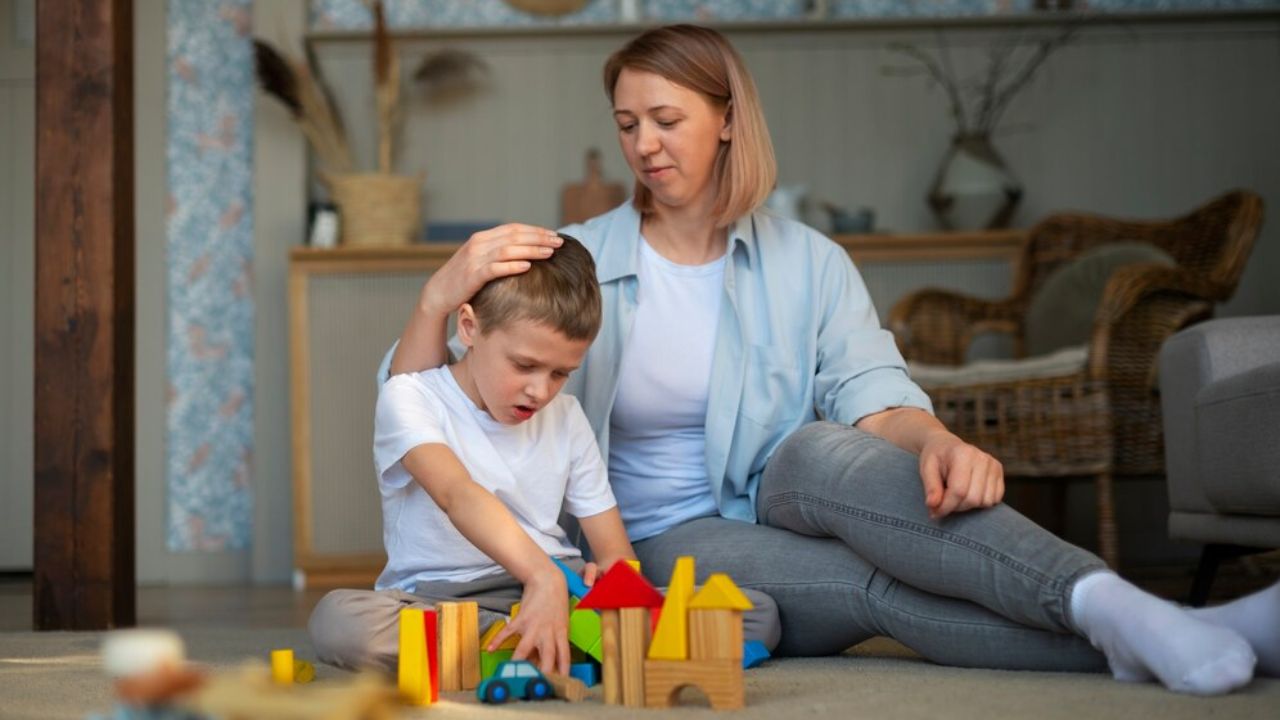
Implementing sensory integration techniques at home can be highly beneficial for individuals with autism, as it can help regulate sensory input, reduce stress, and improve overall well-being. Here are some sensory integration techniques and activities that you can incorporate into your home environment:
1. Create a Sensory-Friendly Space: Designate a quiet and calming area in your home where your child can retreat when feeling overwhelmed or overstimulated. Use soft lighting, comfortable seating, and sensory tools such as weighted blankets, sensory cushions, or fidget toys.
2. Sensory Diet: Develop a sensory diet tailored to your child’s sensory needs and preferences. A sensory diet includes a variety of sensory activities throughout the day to help regulate sensory input. Activities can include swinging, jumping on a trampoline, playing with textured materials (e.g., playdough, sand), or listening to calming music.
3. Deep Pressure Activities: Engage in activities that provide deep pressure input, which can have a calming effect on the nervous system. This can include activities such as firm hugs, using a weighted vest or blanket, rolling a therapy ball over the body, or gentle massage.
4. Proprioceptive Activities: Proprioceptive activities involve providing input to the muscles and joints, which can improve body awareness and coordination. Encourage activities such as climbing, pushing or pulling heavy objects (e.g., carrying books, pushing a cart), jumping on a trampoline, or doing yoga poses that involve resistance.
5. Vestibular Activities: Vestibular input, which involves movement and balance, can help regulate sensory processing. Incorporate activities such as swinging, spinning in a chair, rocking back and forth, bouncing on a therapy ball, or engaging in rhythmic movement activities.
6. Visual Supports for Sensory Regulation: Use visual supports to help your child understand and regulate their sensory experiences. This can include visual schedules for sensory activities, visual timers for breaks, or visual cues to indicate sensory-friendly spaces or tools.
7. Calming Sensory Experiences: Provide opportunities for calming sensory experiences that promote relaxation and stress reduction. This can include listening to soothing music or nature sounds, using aromatherapy with calming scents (e.g., lavender), practicing deep breathing exercises, or engaging in gentle stretching or yoga.
8. Sensory Play: Encourage sensory exploration through play with various materials and textures. Offer sensory bins with materials like rice, beans, water beads, or kinetic sand for tactile stimulation. Include sensory-friendly toys such as squishy balls, textured balls, or fidget spinners.
9. Routine Sensory Breaks: Incorporate regular sensory breaks into your child’s daily routine to prevent sensory overload. Schedule breaks during activities that may be challenging or overwhelming, and provide opportunities for sensory regulation activities during these breaks.
10. Consult with a Sensory Specialist: Consider consulting with an occupational therapist or sensory integration specialist for personalized guidance and recommendations based on your child’s specific sensory profile and needs. They can provide tailored strategies and activities to support sensory integration at home.
Consistency and observation are key when implementing sensory integration techniques at home. Observe your child’s responses to different sensory activities and adjust accordingly based on their comfort level and preferences. Creating a sensory-friendly environment and incorporating sensory activities into daily routines can promote sensory regulation and enhance your child’s overall well-being.
Building Bridges: Effective Communication Strategies for Autism at Home
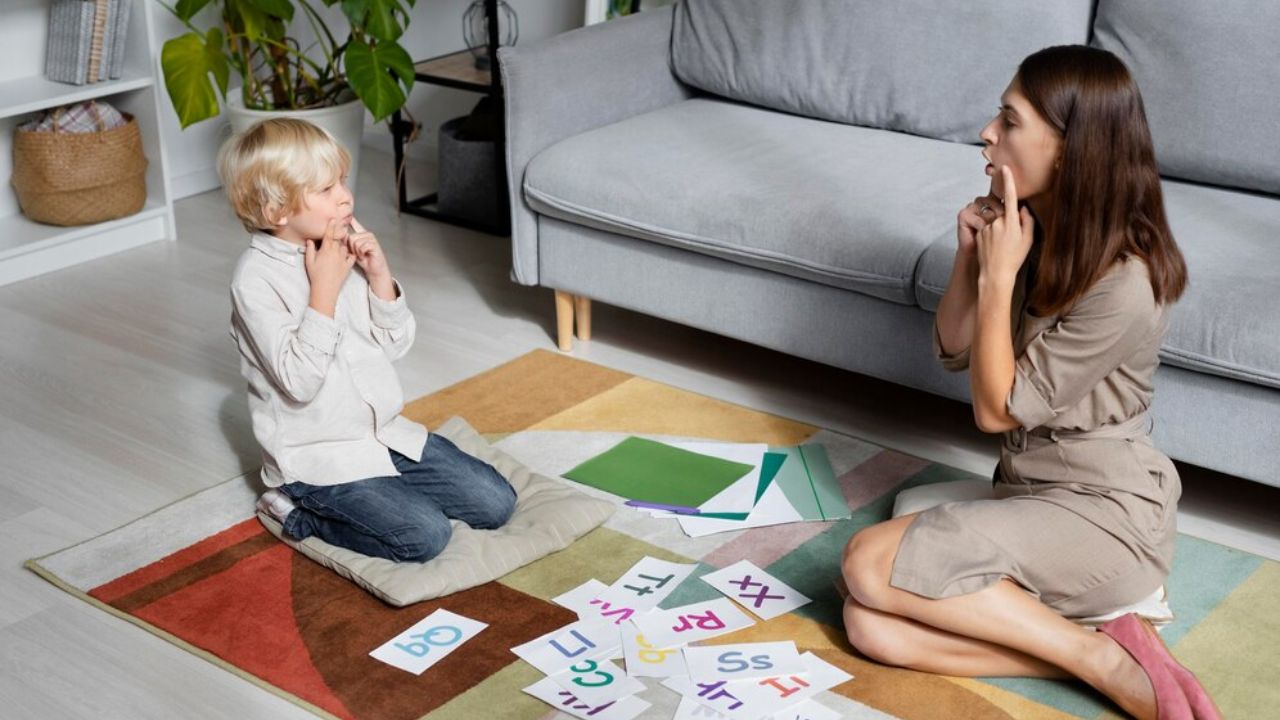
Implementing effective communication strategies at home is crucial for individuals with autism to enhance their communication skills and foster meaningful interactions. Here are some communication strategies and activities that you can incorporate into your home environment:
1. Use Clear and Simple Language: Use clear, concise, and simple language when communicating with your child. Avoid using complex sentences or ambiguous language that may be confusing. Speak at a pace that allows your child to process the information easily.
2. Visual Supports: Use visual supports such as picture cards, visual schedules, communication boards, and symbols to enhance communication. Visual aids can help your child understand concepts, express their needs, and navigate daily routines more effectively.
3. Augmentative and Alternative Communication (AAC): Consider using AAC devices or apps that provide alternative means of communication for nonverbal or minimally verbal individuals. AAC systems can include picture-based communication boards, speech-generating devices, or apps with symbol libraries.
4. Encourage Turn-Taking: Practice turn-taking during conversations and activities to promote social communication skills. Use visual or verbal cues to indicate when it’s your child’s turn to speak or participate in an activity, and encourage them to take turns with others.
5. Use Social Stories: Create and use social stories to teach social skills, explain social situations, and address specific challenges or routines. Social stories use simple language and visuals to help your child understand social expectations and navigate social interactions.
6. Model Communication: Model appropriate communication behaviors by using gestures, facial expressions, and body language during interactions. Demonstrate how to ask questions, express feelings, and engage in conversations, and encourage your child to imitate these behaviors.
7. Expand Language Skills: Encourage language development by expanding on your child’s communication attempts. If your child uses single words or phrases, model longer sentences and encourage them to use more words to express their thoughts and needs.
8. Create Communication Opportunities: Create opportunities for communication throughout the day by engaging in joint activities, asking open-ended questions, and encouraging your child to share their experiences, interests, and feelings.
9. Provide Choices: Offer choices to empower your child and encourage communication. Present choices using visuals or verbal prompts, and allow your child to make decisions within structured limits (e.g., choosing between two snack options, selecting a preferred activity).
10. Be Patient and Supportive: Be patient, understanding, and supportive during communication interactions. Give your child time to process information and respond, and provide positive reinforcement, praise, and encouragement for their communication efforts.
It’s important to individualize communication strategies based on your child’s unique communication abilities, preferences, and needs. Consistency, practice, and a supportive environment are key factors in promoting effective communication skills at home. Additionally, consulting with speech-language therapists or communication specialists can provide valuable guidance and strategies tailored to your child’s communication goals.
Encourage Social Interaction at home

Encouraging social interaction at home is crucial for individuals with autism as it helps develop social skills, fosters meaningful connections, and promotes overall well-being. Here are some strategies and activities to promote social interaction at home:
1. Create Opportunities for Social Play: Set up structured play activities that encourage interaction with siblings, family members, or peers. Choose games or activities that promote turn-taking, sharing, and cooperation, such as board games, puzzles, building blocks, or imaginative play scenarios.
2. Join in Shared Interests: Identify and participate in activities that align with your child’s interests. Whether it’s playing with a favorite toy, engaging in a hobby, or exploring a topic of interest, sharing these experiences can create opportunities for natural social interaction and conversation.
3. Use Visual Supports for Social Skills: Use visual supports such as social stories, visual schedules, and social scripts to teach and reinforce social skills. Create visual reminders of social rules, expectations, and appropriate behaviors during social interactions.
4. Practice Social Skills through Role-Playing: Role-playing scenarios can help your child practice social skills in a safe and supportive environment. Role-play common social situations such as greeting others, taking turns, asking for help, or resolving conflicts peacefully.
5. Arrange Social Playdates: Organize playdates with peers or family friends who understand and support your child’s unique needs. Plan activities that encourage social interaction and cooperation, and provide guidance and supervision as needed to facilitate positive social experiences.
6. Model Social Behaviors: Model appropriate social behaviors and communication skills during interactions with your child. Demonstrate active listening, turn-taking, using polite language, showing empathy, and engaging in reciprocal conversation.
7. Use Positive Reinforcement: Provide positive reinforcement, praise, and encouragement when your child demonstrates social skills and engages in social interactions. Acknowledge their efforts and successes, and celebrate progress in developing social skills.
8. Teach Social Problem-Solving: Teach your child strategies for social problem-solving, such as using words to express feelings, compromising, seeking help from an adult when needed, and finding solutions to conflicts that are fair to everyone involved.
9. Create a Social Story about Social Interactions: Develop a social story specifically focused on social interactions, including appropriate behaviors, social cues, and strategies for navigating social situations. Use visuals and simple language to make the concepts understandable and relatable.
10. Encourage Empathy and Perspective-Taking: Foster empathy by helping your child understand and consider other people’s feelings, perspectives, and experiences. Encourage discussions about emotions, perspective-taking activities, and role-playing scenarios that promote empathy and understanding.
Promote Healthy Lifestyle Habits program at home

Consistency, patience, and a supportive environment are key when encouraging social interaction at home. Tailor activities and strategies to match your child’s interests, abilities, and comfort level, and seek guidance from professionals such as behavioral therapists or social skills trainers for additional support and strategies.
Promoting healthy lifestyle habits at home is essential for individuals with autism to support their overall well-being and development. Here are some strategies and activities to encourage healthy habits:
1. Balanced Nutrition: Offer a variety of nutritious foods to support overall health and energy levels. Include fruits, vegetables, whole grains, lean proteins, and healthy fats in meals and snacks. Encourage your child to try new foods and involve them in meal planning and preparation.
2. Regular Exercise: Incorporate regular physical activity into your child’s daily routine. Choose activities that they enjoy and can participate in comfortably, such as walking, biking, swimming, dancing, or playing active games. Physical activity helps improve mood, reduce stress, and support overall physical health.
3. Adequate Sleep: Ensure your child gets enough sleep based on their age and individual needs. Establish a consistent bedtime routine that promotes relaxation, such as reading a book, taking a bath, or listening to calming music. Create a comfortable sleep environment with minimal distractions and a consistent sleep schedule.
4. Hydration: Encourage your child to drink an adequate amount of water throughout the day to stay hydrated. Offer water as the primary beverage choice and limit sugary drinks. Keep a water bottle accessible and remind your child to take sips regularly, especially during physical activity or hot weather.
5. Limit Screen Time: Set limits on screen time and encourage a balance between screen activities and other healthy pursuits. Use screen time for educational purposes, interactive learning apps, or enjoyable activities that promote engagement and creativity.
6. Mindful Eating: Encourage mindful eating practices by focusing on eating slowly, chewing food thoroughly, and paying attention to hunger and fullness cues. Avoid distractions during meals, such as screens or toys, to promote mindful eating habits.
7. Promote Independence: Encourage your child to develop independence in self-care tasks related to health and hygiene. Teach and support skills such as toothbrushing, handwashing, dressing, and personal grooming. Provide visual supports or step-by-step instructions to help them learn these skills independently.
8. Emotional Regulation: Teach and model healthy coping strategies for managing emotions and stress. Encourage activities such as deep breathing, relaxation exercises, yoga, or sensory activities that promote emotional regulation and self-calming.
9. Outdoor Time: Spend time outdoors in nature regularly to enjoy fresh air, sunshine, and physical activity. Plan outdoor activities such as nature walks, picnics, gardening, or outdoor play to promote physical health and mental well-being.
10. Family Wellness Activities: Engage in family wellness activities that promote health and bonding. Plan activities such as cooking together, family walks or bike rides, family games or sports, and wellness challenges that encourage healthy habits for everyone in the family.
Consistency, positive reinforcement, and a supportive environment are key when promoting healthy lifestyle habits at home. Involve your child in decision-making, provide encouragement and praise for their efforts, and model healthy behaviors as a family. Additionally, consult with healthcare professionals or specialists for guidance and support in promoting a healthy lifestyle tailored to your child’s needs.
Mindfulness and relaxation program at home

Incorporating mindfulness and relaxation techniques into your home environment can benefit individuals with autism by promoting calmness, reducing stress, and improving overall well-being. Here are some mindfulness and relaxation techniques and programs that you can implement at home:
1. Deep Breathing Exercises: Teach deep breathing exercises to help your child relax and manage stress. Practice slow, deep breaths by inhaling deeply through the nose, holding briefly, and exhaling slowly through the mouth. Use visual cues or guided imagery to enhance the experience.
2. Progressive Muscle Relaxation: Guide your child through progressive muscle relaxation exercises. Start by tensing and then relaxing different muscle groups sequentially, focusing on releasing tension and promoting relaxation throughout the body.
3. Mindful Body Scans: Conduct mindful body scans to help your child focus on physical sensations and promote relaxation. Guide them to pay attention to each part of the body sequentially, noticing any tension or sensations without judgment, and encouraging relaxation.
4. Guided Imagery: Use guided imagery or visualization exercises to create calming and positive mental images. Guide your child through imagining peaceful scenes, such as a beach or a forest, and encourage them to engage their senses by describing what they see, hear, smell, and feel.
5. Mindful Eating: Practice mindful eating by encouraging your child to focus on the sensory experience of eating, including taste, texture, and smell. Encourage them to eat slowly, savor each bite, and pay attention to hunger and fullness cues.
6. Yoga and Stretching: Introduce simple yoga poses or stretching exercises that promote relaxation and body awareness. Focus on gentle movements, breathing techniques, and mindful awareness of body sensations during yoga or stretching sessions.
7. Nature Mindfulness: Spend time in nature and practice nature mindfulness activities. Encourage your child to engage their senses by noticing and appreciating the sights, sounds, smells, and textures of the natural environment.
8. Mindfulness Apps and Resources: Explore mindfulness apps and online resources designed for children with autism. These resources often include guided meditation sessions, relaxation exercises, calming music, and visualizations that can be used at home.
9. Create a Relaxation Space: Designate a quiet and calming space at home where your child can practice mindfulness and relaxation techniques. Include comfortable seating, soft lighting, calming decor, and sensory tools like weighted blankets or fidget toys.
10. Consistent Practice and Modeling: Practice mindfulness and relaxation techniques consistently as a family to reinforce their benefits and promote relaxation skills. Model calm and mindful behavior yourself, and encourage open communication about emotions and stress management.
It’s important to tailor mindfulness and relaxation techniques to your child’s preferences and comfort level. Start with simple exercises, be patient, and provide positive reinforcement and encouragement. Consistency and practice over time can help integrate these techniques into daily routines and promote overall well-being at home.
Educate Yourself about Can autism be treated at home?
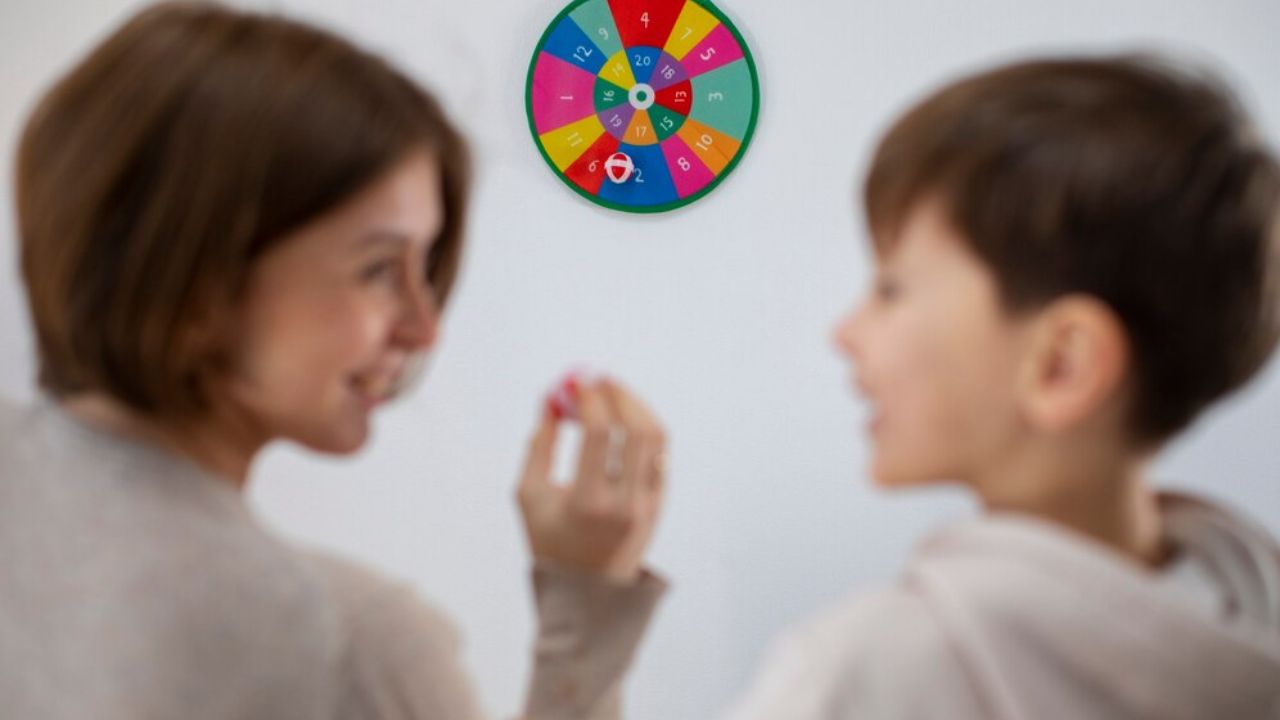
Creating an “Educate Yourself” program at home involves fostering a learning-rich environment that supports both your child’s educational needs and your own knowledge and understanding of autism spectrum disorder (ASD). Here are steps you can take to implement such a program:
1. Read Books and Articles: Start by reading books and articles about autism. Look for resources written by experts in the field, as well as personal accounts and narratives shared by individuals with autism and their families. This will provide a comprehensive understanding of ASD from different perspectives.
2. Online Courses and Webinars: Enroll in online courses or attend webinars that focus on autism education, strategies for supporting individuals with ASD, and interventions such as Applied Behavior Analysis (ABA), speech therapy, and occupational therapy. Many organizations offer free or affordable online training programs.
3. Attend Workshops and Conferences: Attend workshops, conferences, and seminars related to autism and special education. These events often feature presentations by professionals, researchers, and advocates who share valuable insights and strategies for supporting individuals with ASD.
4. Connect with Support Groups: Join local or online support groups for parents and caregivers of individuals with autism. These groups provide a platform for sharing experiences, seeking advice, and accessing resources and information from others who understand the challenges and successes of raising a child with ASD.
5. Consult with Professionals: Schedule meetings with healthcare providers, therapists, educators, and specialists who have expertise in autism. Ask questions, seek guidance, and collaborate with professionals to develop personalized strategies and interventions for your child.
6. Explore Autism Organizations: Explore reputable autism organizations and websites such as Autism Speaks, Autism Society of America, and the National Autism Association. These organizations offer a wealth of information, resources, toolkits, and guides for parents and caregivers.
7. Participate in Parent Training Programs: Enroll in parent training programs offered by autism centers, schools, or therapy clinics. These programs teach practical skills, behavior management techniques, and strategies for promoting learning and development in children with autism.
8. Learn about Therapeutic Approaches: Educate yourself about evidence-based therapeutic approaches for autism, such as Applied Behavior Analysis (ABA), speech therapy, occupational therapy, social skills training, and sensory integration therapy. Understand how these interventions can benefit your child and how to incorporate them into daily routines.
9. Stay Updated with Research: Stay informed about the latest research and advancements in the field of autism. Follow reputable journals, publications, and research institutions that publish studies on autism diagnosis, treatment options, interventions, and emerging therapies.
10. Practice Self-Care: Remember to prioritize self-care as you educate yourself about autism. Take breaks when needed, engage in activities that recharge you, seek support from friends and family, and maintain a healthy balance between learning and caring for yourself.
By implementing an “Educate Yourself” program at home, you’ll gain valuable knowledge, skills, and resources to support your child’s growth, development, and well-being as they navigate life with autism.
How can I calm my autistic child at home?

Working with professionals at home involves collaborating with healthcare providers, therapists, educators, and specialists to support individuals with autism in a home setting. Here are steps you can take to effectively work with professionals at home:
1. Identify Your Needs: Determine the specific areas where you need professional support and guidance. This may include medical care, therapy services (e.g., speech therapy, occupational therapy), educational interventions, behavioral management, or social skills training.
2. Select Qualified Professionals: Research and choose qualified professionals who have expertise in working with individuals with autism. Look for professionals who are licensed, experienced, and knowledgeable about evidence-based practices and interventions for autism spectrum disorder (ASD).
3. Establish Clear Communication: Establish open and clear communication channels with professionals involved in your child’s care. Share relevant information about your child’s strengths, challenges, preferences, and goals. Ask questions, seek clarification, and communicate your expectations clearly.
4. Schedule Consultations and Meetings: Schedule regular consultations, meetings, or home visits with professionals to discuss your child’s progress, review goals and objectives, and develop or modify intervention plans as needed. Use these meetings to share observations, ask for feedback, and collaborate on strategies.
5. Implement Recommended Strategies: Implement strategies, techniques, and interventions recommended by professionals at home. Follow through with recommended activities, exercises, and routines to support your child’s development and well-being.
6. Seek Training and Guidance: Participate in training sessions or workshops provided by professionals to learn how to implement specific interventions or strategies at home. Ask for demonstrations, practice sessions, and feedback to ensure you are effectively implementing recommended techniques.
7. Use Telehealth Services: Take advantage of telehealth services to connect with professionals remotely. Many healthcare providers and therapists offer telehealth appointments, consultations, and sessions that allow you to receive support and guidance from the comfort of your home.
8. Collaborate with Schools and Educators: If your child attends school, collaborate with educators, special education teachers, and school-based professionals to ensure continuity of care and interventions between home and school settings. Share information, strategies, and progress updates to support your child’s learning and development across environments.
9. Track Progress and Outcomes: Keep track of your child’s progress, achievements, and challenges over time. Use data collection tools, progress reports, and observation notes to monitor changes, assess the effectiveness of interventions, and communicate with professionals about outcomes.
10. Advocate for Your Child: Advocate for your child’s needs, rights, and access to appropriate services and support. Be proactive in seeking referrals, accessing resources, and advocating for evidence-based interventions that align with your child’s unique strengths and needs.
Working collaboratively with professionals at home allows you to access specialized expertise, receive personalized guidance, and implement effective interventions that support your child’s growth, development, and quality of life. Communication, collaboration, and active participation are key elements of a successful partnership with professionals.
Conclusion
In conclusion, while the concept of “curing” autism is complex and multifaceted, there are numerous strategies that caregivers can implement at home to support individuals with autism spectrum disorder (ASD) in reaching their fullest potential. It’s crucial to approach this topic with sensitivity, understanding, and a recognition of the unique strengths and challenges of each individual with autism.
By focusing on creating a supportive and inclusive home environment, implementing evidence-based interventions, and promoting holistic well-being, caregivers can play a pivotal role in enhancing the quality of life for individuals with ASD. While there may not be a single “cure” for autism, the love, understanding, and proactive support provided within the home can empower individuals with autism to thrive, grow, and make meaningful contributions to their families and communities.
Ultimately, the journey of supporting individuals with autism at home is one of continuous learning, adaptation, and celebration of progress, reinforcing the importance of empathy, patience, and acceptance in our approach to autism spectrum disorder. Together, we can strive to create a world where individuals with autism are valued, respected, and empowered to live fulfilling lives.
Frequently Asked Question about How To Cure Autism At Home
1. Is it possible to cure autism at home?
– Autism is a neurodevelopmental condition with no known cure. However, home-based interventions and therapies can significantly improve the quality of life and functioning of individuals with autism.
2. What are some common home-based interventions for autism?
– Common interventions include structured routines, sensory integration techniques, communication strategies, social skills training, and dietary modifications, among others.
3. Can dietary changes help in curing autism at home?
– While there’s no specific diet to cure autism, some individuals may benefit from dietary changes that address food sensitivities or gut health issues, potentially alleviating certain symptoms.
4. How important is early intervention in managing autism at home?
– Early intervention is crucial for improving outcomes in individuals with autism. Initiating interventions as early as possible, ideally before the age of three, can lead to significant progress in communication, behavior, and social skills.
5. Are there any risks associated with home-based interventions for autism?
– It’s essential to implement evidence-based interventions and consult with healthcare professionals to ensure safety and effectiveness. Inappropriate or poorly executed interventions may not only be ineffective but could also pose risks to the individual’s well-being.
6. What role do parents/caregivers play in home-based autism therapies?
– Parents and caregivers are instrumental in implementing interventions, providing support, and creating a nurturing environment for their child with autism. Their involvement and consistency are vital for the success of home-based therapies.
7. How can I create a sensory-friendly environment at home for my child with autism?
– You can create a sensory-friendly environment by minimizing sensory overload, providing sensory-rich activities, using visual supports, and creating quiet spaces where your child can retreat if needed.
8. Are there any technology-based interventions for autism that can be used at home?
– Yes, there are various technology-based interventions, such as educational apps, communication devices, and virtual reality therapy, that can supplement home-based interventions for individuals with autism.
9. What are some strategies for promoting social interaction at home for individuals with autism?
– Strategies include structured playdates, modeling social skills, practicing turn-taking, incorporating social stories, and providing opportunities for joint activities that align with the individual’s interests.
10. Is it possible for individuals with autism to lead fulfilling lives without a cure?
– Absolutely. While there may not be a cure for autism, many individuals with autism lead fulfilling and meaningful lives. With appropriate support, understanding, and acceptance, they can thrive and make valuable contributions to their families and communities.

